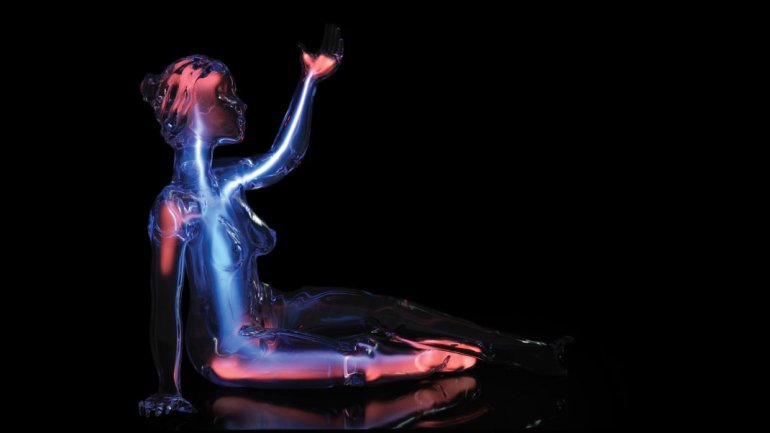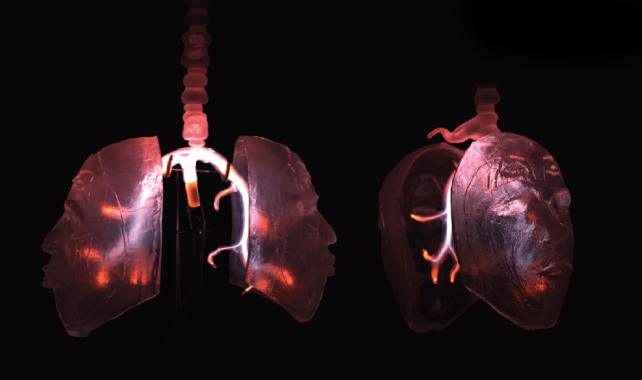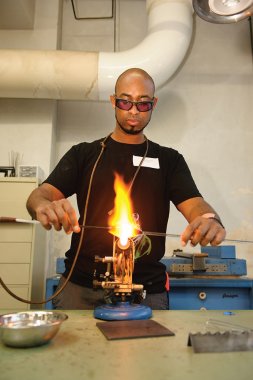Plasma Fantastica
Plasma Fantastica
Percy Echols II didn’t set out to work with glass. Growing up in Bloomington, Illinois, he poured his artistic energy into drawing during his high school years. When he enrolled at Illinois State University, he felt pulled toward graphic design, which seemed like “the perfect balance between art and financial success,” Echols says. He now realizes “it doesn’t matter what field you study … it’s really about your ability to connect with those [professional] spaces in general.”
When a college friend asked him to take a glassblowing course on a whim, Echols didn’t even know what it was, but his connection to the form was intense and immediate. Glassblowing’s tactile, physical nature reinforced the sense of elemental making: “You could take something that normally you drink water out of and shape that; I thought that was really amazing.” That interplay between function and design lies at the heart of his work to this day.
In 2015, after earning his BFA, he went to the Pittsburgh Glass Center as a studio technical apprentice. The 29-year-old Echols remains there on a residency, as the first winner of an award honoring creativity and imagination in glass.
His output ranges from tilted wine glasses to more traditional sculptural work, but his current focus is using plasma, a relatively new medium (similar to neon, which he also works with), to create interactive light sculptures (think of those novelty plasma globes that change as you touch them). Echols examines how light changes the glass form itself; he likens his role to that of a house’s interior designer. The Telltale Truth (2015) exemplifies the effect, as veins of light pulse beneath a pair of glass faces that double as lungs.
Ask the artist what his most important tool is, and you might expect him to select from his vast array of equipment. But the process is so involved – managing the vessel itself, the gas mixture, and the electricity feeding into it – that it’s impossible to do without assistance. So what does Echols rely on? “Personal relationships.” It’s not just about the actual work, which requires helping hands, but about the larger community of like-minded adventurers in glass and light. “What really attracts me to plasma is how unexplored it is,” he says. “We’re all new explorers in this process.”
Echols knows progress won’t come if he goes it alone. That’s why he started his blog and podcast, Taming Lightning. It doesn’t just provide him a reason and venue to trade thoughts with his artistic peers; the recordings also serve as what he calls “a public directory of research” for other artists, a means by which he can grow and organize the burgeoning community.
Moving forward, Echols’ goal is to “further establish plasma as an accessible medium,” whether that’s through his own artistic work, his podcast, or writing a book. He believes artists cannot separate personal ambition and community, and that developing both himself and the field he’s a part of will require an “unyielding effort.” He wouldn’t have it any other way.







